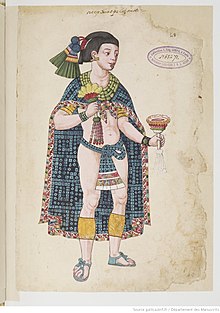Eze


Eze bụ utu aha e nyere eze nwoke n'ọnọdụ dịgasị iche iche. Nwanyị yiri ya bụ eze nwanyị na-achị achị ("eze nwanyị na--achị achị / na-achị", n'adịghị ka eze nwanyị), ọ bụ ezie na n'ọnọdụ ụfọdụ, a na-enye ụmụ nwanyị dịka Mary, Eze nwanyị nke Hungary, na Jadwiga nke Poland na 1380s aha "Eze".
- In the context of prehistory, antiquity and contemporary indigenous peoples, the title may refer to tribal kingship. Germanic kingship is cognate with Indo-European traditions of tribal rulership (c.f. Indic rājan, Gothic reiks, and Old Irish rí, etc.).
- In the context of classical antiquity, king may translate in Latin as rex and in Greek as archon or basileus.
- In classical European feudalism, the title of king as the ruler of a kingdom is understood to be the highest rank in the feudal order, potentially subject, at least nominally, only to an emperor (harking back to the client kings of the Roman Republic and Roman Empire).
- In a modern context, the title may refer to the ruler of one of a number of modern monarchies (either absolute or constitutional). The title of king is used alongside other titles for monarchs: in the West, emperor, grand prince, prince, archduke, duke or grand duke, and in the Islamic world, malik, sultan, emir or hakim, etc.[1]
- The city-states of the Aztec Empire had a Tlatoani, which were kings of pre-Hispanic Mesoamerica. The Huey Tlatoani was the emperor of the Aztecs.[2]
Okwu eze nwekwara ike izo aka na eze, utu aha a na-enye di nke eze nwanyị na-achị mgbe ụfọdụ, mana utu aha nke nwa eze bụ ihe a na-ahụkarị.
Okwu mmalite
dezieOkwu Bekee bụ eze sitere na Anglo-Saxon cyning, nke n'aka nke ya sitere na Common German *kuningaz. A gbaziri okwu German nkịtị n'asụsụ Estonian na Finnish n'oge mbụ, na-adịgide n'asụsụ ndị a dị ka econom. Ọ sitere na okwu *kunjom "kin" (Old English__ilo____ilo____ilo__) site na -inga- suffix. Ihe ọ pụtara n'ụzọ nkịtị bụ nke "nwa nke ndị ikwu [noble], ma ọ bụ ikekwe "nwa ma ọ bụ nwa nke otu onye a mụrụ n'ụzọ dị mma" (OED).
Okwu Bekee na-asụgharị, ma na-ewere ya dịka, Latin rēx na ihe ya na ya kwekọrọ n'asụsụ dị iche iche nke Europe. Okwu German dị iche na okwu maka "King" n'asụsụ ndị ọzọ nke Indo-European (*rēks "onye ọchịchị"; Latin rēx, Sanskrit rājan na Irish ríg; Otú ọ dị, lee Gothic reiks na, dịka, German Reich nke oge a na Dutch rijk nke oge a).
Akụkọ ihe mere eme
dezieOkwu Bekee sitere na German, ma n'akụkọ ihe mere eme na-ezo aka n'ọchịchị German, n'oge tupu oge Ndị Kraịst ụdị ọchịchị agbụrụ. Ọchịchị ndị eze nke Europe n'oge Ndị Kraịst na-emepechabeghị anya nwetara ihe ha na-ekwu site na Iso Ụzọ Kraịst na ikike Chineke nke ndị eze, nke echiche nke ịbụ eze dị nsọ nke e ketara site na oge ochie nke Germany.
Oge Ụwa Na-emepechabeghị Anya malitere site na nkewa nke Alaeze Ukwu Rom nke Ebe Ọdịda Anyanwụ n'ime alaeze ndị na-amaghị nwoke. N'Ebe Ọdịda Anyanwụ Europe, alaeze nke ndị Frank ghọrọ Alaeze Ukwu Carolingian site na narị afọ nke asatọ, alaeze Anglo-Saxon England jikọtara n'ime alaeze England site na narị narị afọ nke iri.
Site na nkewa nke Alaeze Ukwu Carolingian na narị afọ nke 9, usoro feudalism na-etinye ndị eze n'isi pyramid nke mmekọrịta dị n'etiti ndị isi na ndị na-achị achị, dabere na ọchịchị mpaghara nke ndị isi, na ọnọdụ dị n'agbata ndị count (ma ọ bụ ndị earls) na ndị isi. Isi nke European feudal manorialism na High Middle Ages bụ ókèala nke Alaeze Ukwu Carolingian mbụ, ya bụ alaeze nke France na Alaeze Ukwu Rom Dị Nsọ (nke dị na alaeze aha nke Germany na Ịtali).[3]
N'oge European Middle Ages, alaeze ndị Europe nwere usoro nchịkwa nke ike, nke mere na site na Late Middle Ages enwere ọtụtụ alaeze buru ibu ma dị ike na Europe, nke ga-etolite n'ime ike dị ukwuu nke Europe n'oge mmalite nke oge a.
- Na Iberian Peninsula, ihe fọdụrụ n'alaeze Visigothic, obere alaeze nke Asturias na Pamplona, gbasaa n'ime alaeze Portugal, Crown of Castile na Crown of Aragon na Reconquista na-aga n'ihu.
- N'ebe ndịda Europe, e guzobere alaeze Sicily mgbe ndị Norman meriri ndịda Ịtali. E kwuru na alaeze Sardinia bụ aha dị iche nke Crown of Aragon nwere na 1324. Na Balkan, e guzobere alaeze Serbia na 1217.
- N'etiti Europe, e guzobere alaeze Hungary na AD 1000 na-esochi Iso Ụzọ Kraịst nke Magyars. E guzobere alaeze Poland na Bohemia n'ime Alaeze Ukwu Rom Dị Nsọ na 1025 na 1198, n'otu n'otu.
- N'ebe ọwụwa anyanwụ Europe, Grand Duchy nke Moscow ekwughị na ọ bụ alaeze ruo mgbe mmalite nke oge a Tsardom nke Russia.
- N'ebe ugwu Europe, alaeze agbụrụ nke Viking Age site na narị afọ nke iri na otu gbasaa n'ime Alaeze Ukwu North Sea n'okpuru Cnut the Great, eze Denmark, England na Norway. Iso Ụzọ Kraịst nke Scandinavia dugara n'alaeze "kwesịrị ike" nke Sweden na Norway, na njedebe nke oge etiti oge pan-Scandinavian Kalmar Union.
Hụkwa
dezie
Ihe edeturu
dezie- ↑ Pine (1992). Titles: How the King became His Majesty. New York: Barnes & Noble. ISBN 978-1-56619-085-5.
- ↑ History Crunch Writers. Aztec Emperors (Huey Tlatoani) (en). History Crunch - History Articles, Summaries, Biographies, Resources and More. Retrieved on 18 April 2021.
- ↑ see e.g. M. Mitterauer, Why Europe?: The Medieval Origins of Its Special Path, University of Chicago Press (2010), p. 28.
Ihe odide
dezie- (1987) in Cannadine: Rituals of Royalty: Power and Ceremonial in Traditional Societies. Cambridge University Press. ISBN 0-521-33513-2.
- Craughwell (2009). 5,000 Years of Royalty: Kings, Queens, Princes, Emperors & Tsars. Black Dog & Leventhal Publishers. ISBN 978-1-60376-189-5.
- Hani (2011). Sacred Royalty: From the Pharaoh to the Most Christian King. The Matheson Trust. ISBN 978-1-908092-05-2.
Njikọ mpụga
dezie- Media related to Kings at Wikimedia Commons
